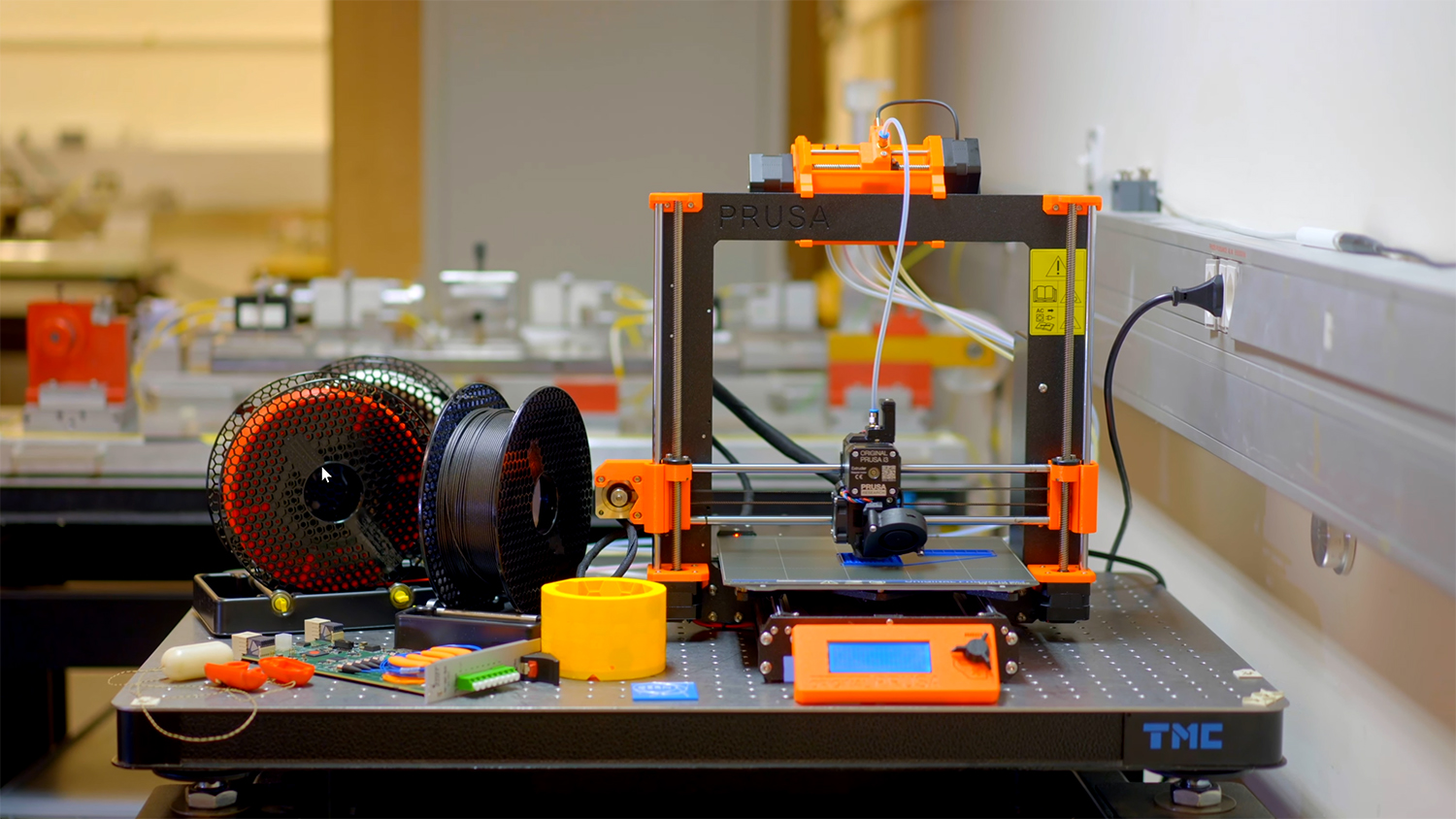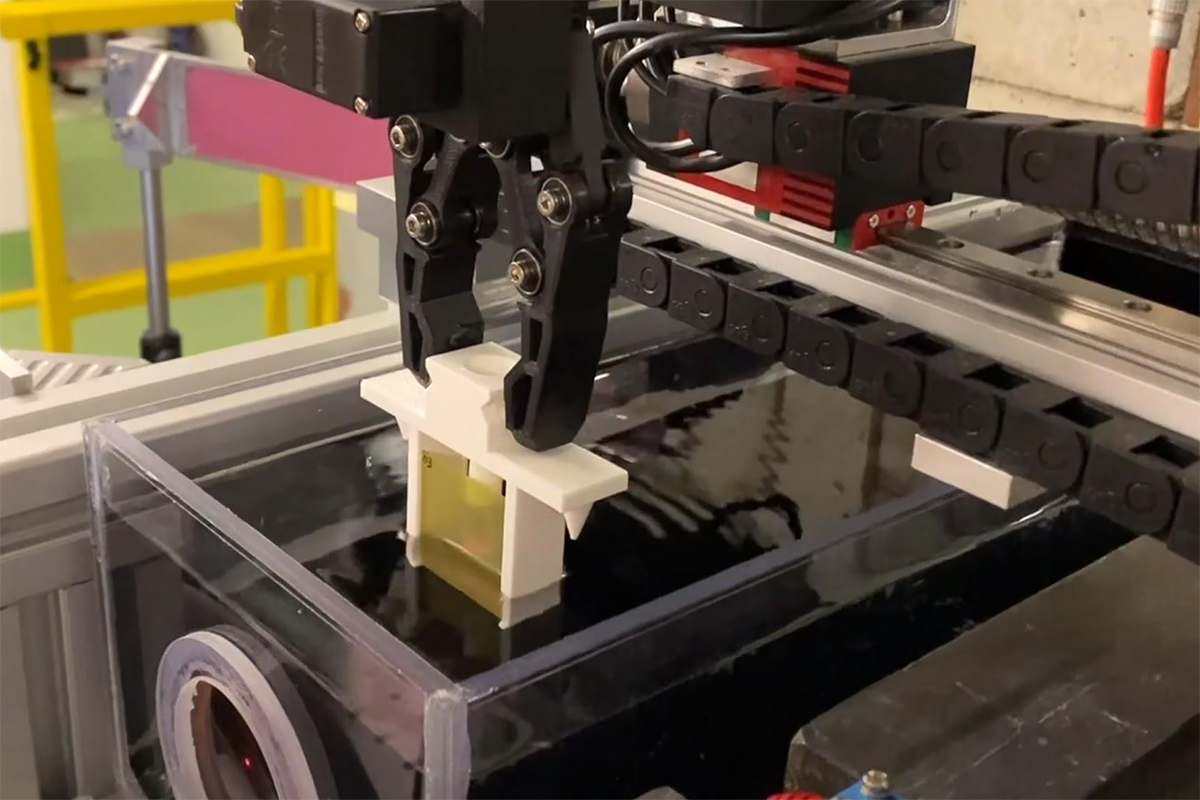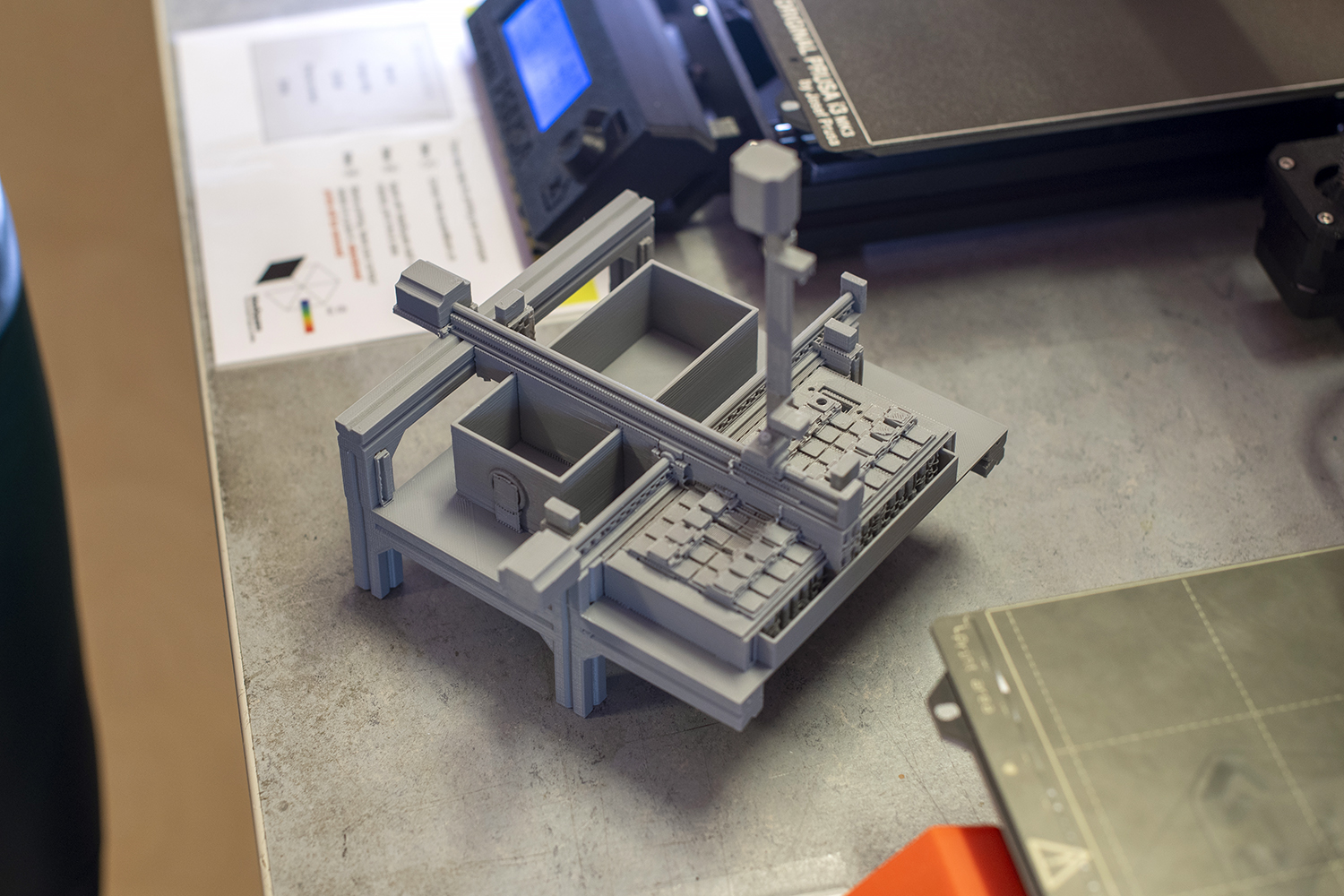In this article, we would like to invite you on a journey through CERN, home of the Large Hadron Collider, where the world’s top scientists use 3D printing to help their groundbreaking research.
First, a quick introduction (just in case): CERN, (French acronym for European Organization for Nuclear Research), is an international institution based on the border of France and Switzerland near Geneva. It was founded in 1954 and focuses on understanding the interactions of the smallest, sub-atomic particles. They are best known for the Large Hadron Collider, a massive ring-shaped facility that is located 100 meters below the surface and stretches for an astonishing 27 kilometers. It’s used mainly to test the predictions of different theories of particle physics through particle collisions. Oh, and by the way, they are already planning to build an even bigger one…
© CERN – Large Hadron Collider
It’s a place of incredible discoveries – several Nobel Prize winners have made their experiments here, including the famous confirmation of the Higgs boson’s existence. But CERN’s expertise goes beyond particle physics – for example, they invented the World Wide Web protocol that we use every day. CERN also contributes to medical innovation through its cutting-edge technologies, competencies, and know-how.
The whole place is huge and mind-boggling – more than 12,000 people work there and in some parts of the facility, to get lunch, you have to literally cross the country border. We’ve spent four days there, learning about their research and how they use the Original Prusa printers in particular. Actually, we could easily stay there for a few weeks and still discover something new. It was an incredible journey, one that Jo himself oversaw. We even hosted a seminar about 3D printing, open-source, and material development.
CERN supports the Open Science movement so if you’re looking for an adventure, you can visit and see for yourself. But with us, you’ll get a little extra peek behind the curtain. 🙂
Unlimited possibilities
In the pursuit of understanding the secrets of the universe, CERN relies on a unique array of specialized tools, often custom-crafted for particular scientific processes. During our visit, we explored huge workshops where various materials, ranging from common metals to rare elements, were carefully shaped. The engineers employ diverse techniques: From CNC machining to metal casting or etching with acid, to create precise forms without compromising material strength.
Jo was particularly amazed by the collection of large CNC machines and metal 3D printers creating titanium components. We had the opportunity to meet an engineer who was passionate about his work and explained how scientists would bring their creative ideas to him for realization.
© CERN – CMS experiment
“The best part is when scientists challenge me to make their often crazy concepts a reality. It’s both rewarding and a lot of fun,” he smiled as he programmed the CNC machine to craft a large aluminum pipe connector.
By that time, we started to have doubts over the need for 3D printers. But they quickly faded when we met Jonas Kampp and stepped into his laboratory.
The small but crucial tools
“We use 3D printing a lot,” says Jonas, a Mechatronics engineer at CERN. “It’s not just for testing, we also use it to create parts that go directly into the tunnels of the Large Hadron Collider.”
Their work is critical for the LHC: Since the ring is 100 meters underground and stretches over 27 kilometers, keeping it perfectly aligned for experiments is no small task. The Earth’s movements can mess with its accuracy, so Jonas helps to keep it on track.
“We make sensors, control systems, and accelerators to measure and adjust the positions of the big magnets, making sure they’re perfectly aligned,” Jonas explains.
A perfect example is this bead: It may look simple, but it has a super important job. It carries a fragile wire used for measuring distances in a critical part of the LHC, and it needs to do that for a whole 200 meters on each side of the four experiments without damaging the wire. It is quite a challenge, and it took Jonas a lot of time and tries to get it just right. But thanks to 3D printing, Jonas now has a perfect tool.
A lot of equipment uses fragile fiber optics. Small but clever 3D printed casings and guides help to protect the wires. Look at this FSI photodetection module:
The 3D printed part guides the optical fibers into neat coils. Too sharp bends would crack the glass fiber inside and ruin the signal.
3D printing is an important tool for Jonas, especially during the testing phase. The team needs to make sure their tools work reliably before using the more expensive materials. However, sometimes, 3D printed models even end up as the final product.
This is an initial feasibility test print for an HLS (Hydrostatic Levelling System) sensor. Jonas was exploring the possibility of being able to 3D print the part in metal and reduce production costs.
Another example is this prototype of a connector between two WPS (Wire Positioning System) sensors.
Before we published this article, Jonas updated the design several times…
Step into IdeaSquare!
Another place that relies heavily on 3D printing is CERN’s IdeaSquare. It’s a workshop dedicated to connecting society with science, and it’s where young minds get to be creative, just like the scientists at CERN. There we met Dina Zimmermann, a Structural engineer from Norway who’s responsible for prototyping. She showed us how 3D printing is making a real impact in different experiments.
© CERN – Linear Electron Accelerator for Research (CLEAR)
CERN is not just about the Large Hadron Collider; they have other particle accelerators too. One, called CLEAR, is doing something amazing: They’re using a beam of radiation to target and destroy cancer cells while sparing healthy tissue.
But here’s the real challenge: Throughout the experiment, they need to quickly replace irradiated cell samples without constantly turning the beam on and off. With radiation in the mix, human safety is a top priority. To solve this, the CLEAR team created a smart robot that can change the samples without stopping the beam. This saves a lot of time and keeps the experiments efficient. And the sample boxes are 3D printed by Dina at IdeaSquare.
This is how the robot switches the samples
With 3D printing, you can make sample holders of all shapes and sizes.
This is a 3D printed model of the CLEAR smart robot.
IdeaSquare also teams up with other projects. One of them, VITO, uses nuclear magnetic resonance to study metal ions and biomolecules. It’s tricky because they need to work with liquid samples in a high-vacuum setting. Opening and closing the equipment to swap samples takes time.
So, the engineers at CERN came up with a nifty solution. They designed a special holder for the liquid samples and used a 3D printer to make an 8mm capillary. It lets them change samples quickly without stopping the experiments.
The capillary is printed from resin on the Original Prusa SL1 printer.
So much more at CERN
As you can see, CERN is a place filled with endless possibilities. Our exploration of 3D printing here is just a glimpse of what’s happening at this institution. Original Prusa 3D printers are present throughout various departments, from maintenance and IT to the research facilities.
© CERN – Computing
What’s impressive is that, despite all the advanced scientific capabilities at their disposal, scientists and engineers at CERN value 3D printing for its flexibility.
“3D printing allows scientists and engineers to quickly create prototypes and push the boundaries of what’s possible,” shares Dina.
Jonas shares her opinion.
“While my work could go on without 3D printing, it would be slower and far more complex,” Jonas adds.
And with that, our visit to this world-class scientific facility comes to an end, but not quite. We’ve brought back a little souvenir for everyone – a printable model of the CMS detector, an essential component of the Large Hadron Collider. You can find it now on Printables.com. We hope you enjoy this small piece of science as a token of our journey. Jo immediately put his on display…
Jakub Kmošek, Štepán Feik and Jakub Fiedler






















Great case study! How can the company I work for be featured in a similar article?
Hello, you can send us an email at info@prusa3d.com about your company and our content team will get back to you with further details/ questions.
Jakub Kučera – Prusa Research
Can you provide details on how they managed to get those sample containers so smooth and transparent? None of the things I've tried come close!